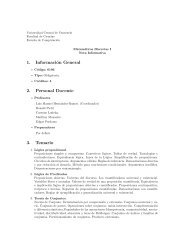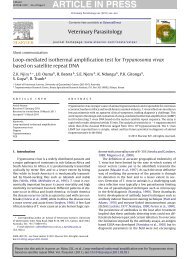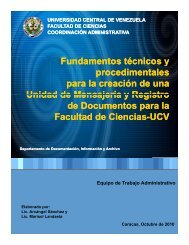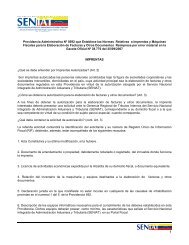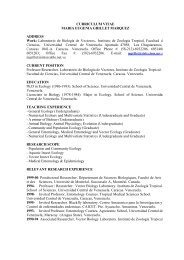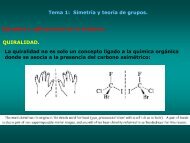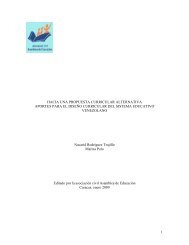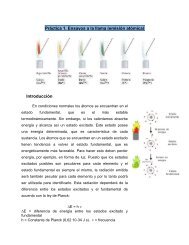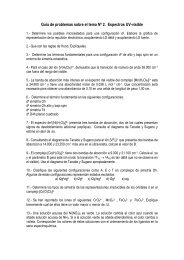Collecting and Preserving
Collecting and Preserving
Collecting and Preserving
- No tags were found...
You also want an ePaper? Increase the reach of your titles
YUMPU automatically turns print PDFs into web optimized ePapers that Google loves.
mens to prevent them from rotating (cartwheeling) on theirpins <strong>and</strong> damaging adjacent specimens. Microvials shouldhave an additional pin at the end of the vial to keep it fromcoming off its stopper. Vials other than microvials shouldbe wrapped in a box separate from pinned specimens.(3) Unless the box in which the specimens arepinned is shallow enough so that the heads of the pinsalmost touch the lid, a piece of firm cardboard should becut to fit into the box <strong>and</strong> lie on top of the pins. If there areonly a few specimens in the box, a few extra pins shouldbe added near the corners to keep the cardboard level. It ishelpful to attach a tab made of a piece of adhesive tapefolded double, with the ends left free to attach to the top ofthe inserted cardboard. The insert may be lifted out by thetab. The space between the insert <strong>and</strong> the lid of the boxshould be filled with enough packing material, preferablycotton batting, not excelsior or any shredded or loosematerial, to keep the insert pressed lightly against the topsof the pins when the lid is in place. This prevents the pinsfrom working loose <strong>and</strong> wreaking havoc in transit.(4) If only one or two specimens are being shipped,they may be placed in a straight-sided plastic vial with apress-on or screw-on top. The vial should be of sufficientdiameter to hold the labels in a normal position. A corkstopper cut to such a length that its larger end is a littlegreater in diameter than that of the inside of the vial ispressed tightly into the bottom of the vial. This willprovide a good pinning bottom into which one or twopinned specimens may be firmly pressed. Attach the coverof the vial, wrap the vial in enough packing material tohold it firmly in a mailing tube, attach the cover of themailing tube, <strong>and</strong> it is ready to ship.Although it is good practice to fumigate boxesbefore shipping, do not leave loose fumigant in the boxwith the specimens nor any fumigant balls on pins incontainers. They are especially prone to work loose <strong>and</strong>damage specimens.Techniques <strong>and</strong> Tools(5) Type specimens require special precautions. Inmost cases types should be packaged individually in smallboxes <strong>and</strong> each box covered with a thin plastic wrap orsomething similar. In this way, if a specimen is damaged,the pieces are confined to a small area <strong>and</strong> there is noquestion of what pieces came from what specimen.7.3 - Specimens in Vials.The following procedures are recommended forshipping vials:(1) Fill each vial with liquid preservative. Stoppertightly by holding a pin or piece of wire between the vial<strong>and</strong> the stopper to permit air or excess fluid to escape, thenremove the pin or wire. Make certain that cork stoppers donot have defects that will allow leakage. Screw-top vialsshould be firmly closed <strong>and</strong> sealed with a turn <strong>and</strong> a halfof plastic adhesive tape or Parafilm around the lower edgeof the cap <strong>and</strong> part of the vial. There is no need to sealwith paraffin; it often breaks loose <strong>and</strong> will not preventleakage.(2) Wrap each vial with cotton, tissue, paper toweling,or similar material. Allow no piece of glass to comeinto contact with another piece of glass. Several vials maybe wrapped together or held with tape or rubberb<strong>and</strong>s as aunit, or they may be placed in a small cardboard box withenough packing to insure that they are not shaken around.7.4 - Loading Cartons.After pinned specimens, specimens in vials, or bothhave been prepared properly, they should be placed in astrong carton large enough to hold at least 5 cm of packingmaterial around all sides including the top <strong>and</strong> bottom (fig.34). Use enough packing material to prevent the contentsof the carton from moving about, but do not pack thematerial tightly. It should be resilient enough to absorbshocks <strong>and</strong> prevent damage to the contents being shipped.One or a few vials may be shipped in a mailing tube aspreviously described. When shipping more than one box orpacket of vials, tie or wrap them together as a unit beforeplacing them in the larger carton. Individual boxes or vialsotherwise may easily be overlooked <strong>and</strong> lost whenunpacked. Since vials of specimens in fluid are muchheavier than boxes of pinned specimens, cartons containingmany vials may be packed somewhat tighter in thecarton than those containing only pinned specimens sincethey tend to remain relatively stationary in the carton. It isnot necessary to ship pinned <strong>and</strong> liquid-preserved specimensin separate cartons, but if there are many of thelatter, it is advisable to ship them separately.Fig. 35. Some commonly used containers forshipping microscope slides.7.5 - Shipping Microscope Slides51



